Life-Affirming Biosensing with the Heart Sounds Bench

The Heart Sounds Bench amplifies live unfiltered heart sounds. Shown here on exhibit at the Atlanta Art Fair, in the exhibit curated by Birney Robert.
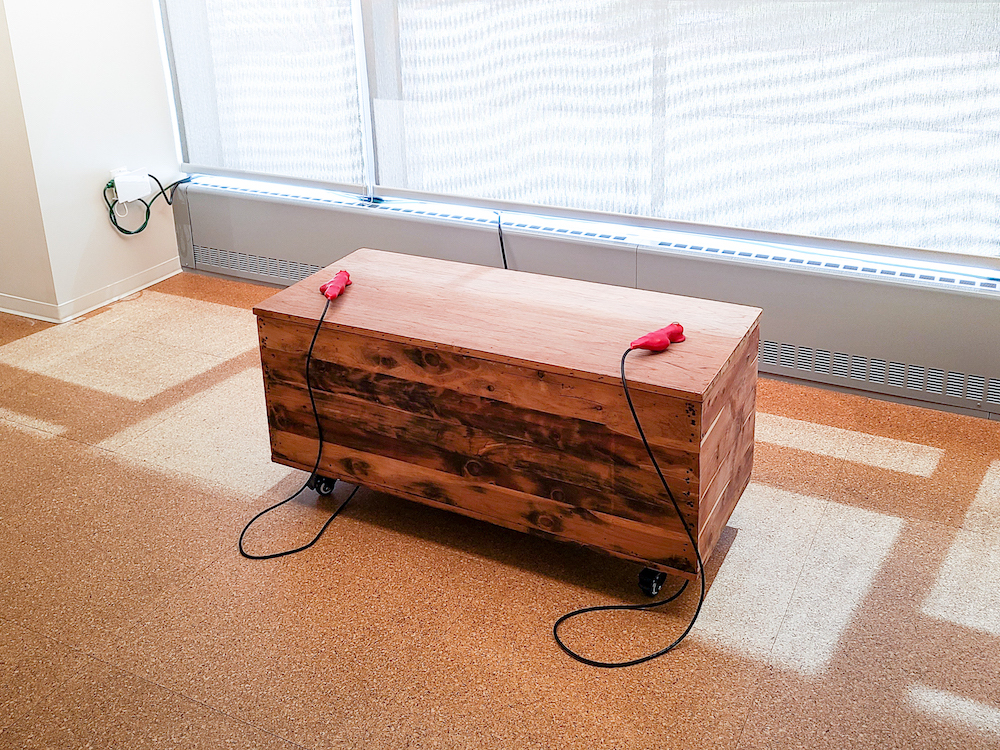
Shown here on exhibit at the Georgia Tech Art Gallery, as part of the Extension of Self exhibit in fall 2022. Exhibit curated by Birney Robert. Photo taken by Terence Rushin. Photo edited by Noura Howell.
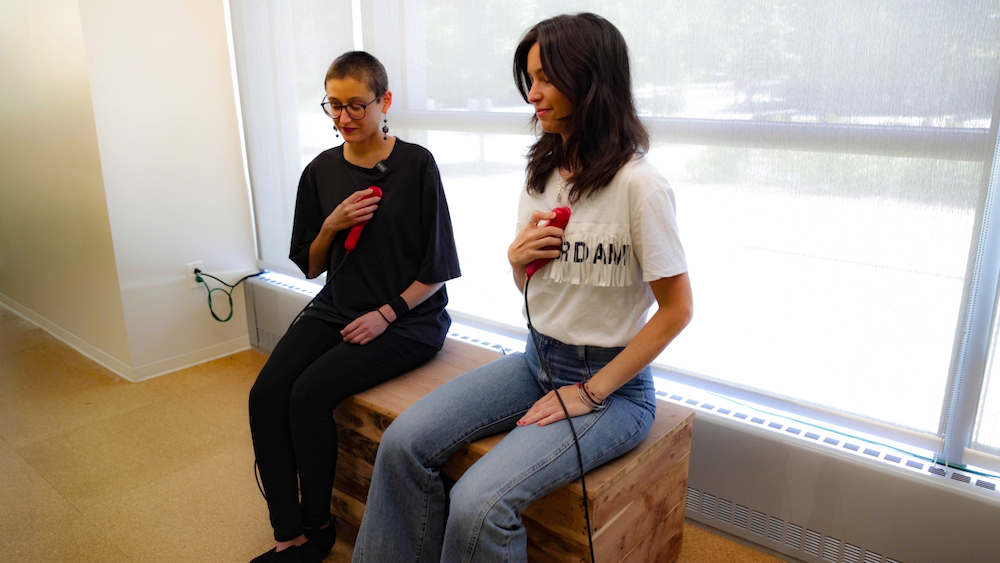
Two people listen to their heart sounds gently emanate into their surroundings, inviting a quiet moment of rest, listening, and appreciating being alive. Still from video taken by Terence Rushin. Photo edited by Noura Howell.
The Heart Sounds Bench v1
Heart Sounds Bench Indoor Demo from Noura Howell on Vimeo. Video shot by Eric Arvai. Video editing by Noura Howell.
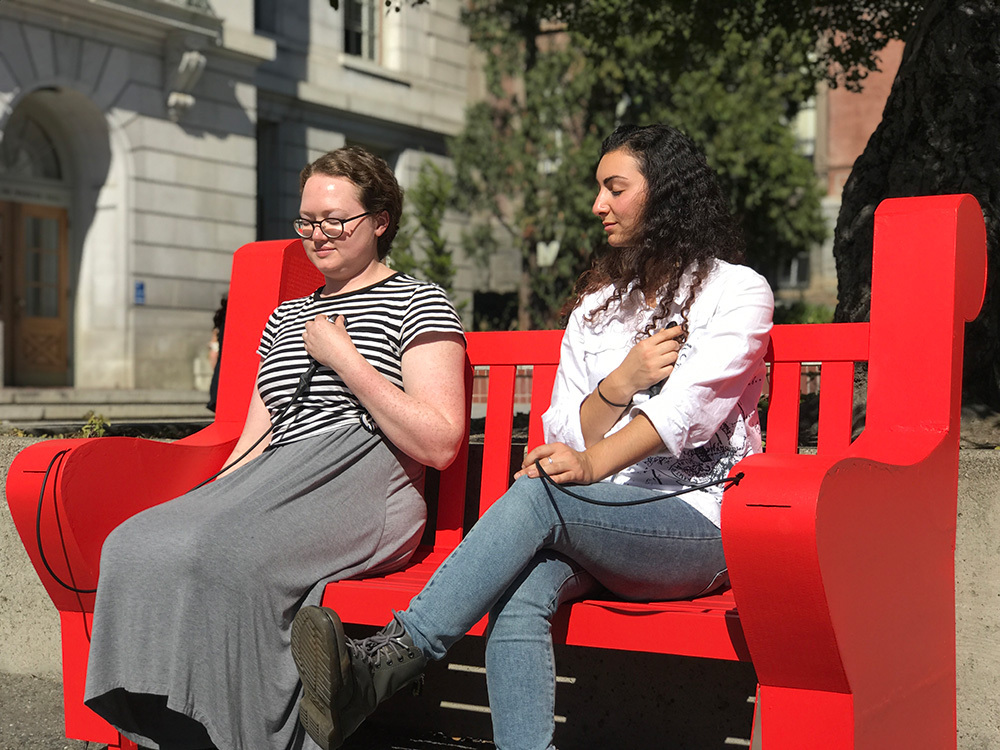
An earlier version of the Heart Sounds Bench. Photo credit: Kimiko Ryokai.
Concept: Critically Reimagining Data in Public Space
Benches invite rest and taking in one's surroundings. Instead of efficiency or surveillance, how might biosensing technology (and the data produced by it) be enrolled to support this simple yet foundational aspect of public space?
‘Smart city’ narratives herald promises of IoT data-driven innovations leveraging biosensing technologies. These technologies produce a wide range of data about people’s bodies, behaviors, and even claim to provide insight into people’s thoughts and feelings. This data is often enrolled to ‘know’ people more transparently, claiming to support normative ideas of safety, wellness, and productivity. Knowing people in terms of data-driven categories is problematic.
“If we examine the process of ‘understanding’ people and ideas from the perspective of Western thought, we discover at at its basis is this requirement for transparency. In order to understand and thus accept you, I have to measure your solidity with the ideal scale providing me with grounds to make comparisons and, perhaps, judgments. I have to reduce... I relate it to my norm. I admit you to existence, within my system.” —Glissant, Poetics of Relation, “For Opacity”
I designed the Heart Sounds Bench to resist this will to know people more transparently via data. Drawing from postcolonial philospher Glissant’s call for the right to opacity, I think biosensing technology should respect people’s right to be opaque, unknowable, to exist outside and beyond what it is possible to know via data. Too much gets lost in translation when people are reduced to normative data-driven categories. Claims to knowledge with data should be humble and respect the diversity and complexity of human experience.
The Heart Sounds Bench is one design exploration of enrolling biosensory data in public space to support opacity rather than transparency. Listening to heart sounds is a very intimate form of data, but it does not ‘reveal’ much ’information‘ to bench-sitters. Rather, during a pilot study in which pairs of strangers sat on the bench, participants described feeling a sense of shared life energy. Although it was factually obvious that both people were alive, experiencing the heart sounds was a visceral reminder of shared vitality and shared vulnerability.
I propose life-affirmation as an alternative goal for biosensory data in public space. Affirming our shared existence and living in public space is an important part of the experience of city living. Moment of life-affirmation in city living can range from something as grand and celebratory as a public festival, to something as mundane as making space for someone to sit on the bus. Life-affirmation includes aspects of recognition, connection, and opacity. Whereas many biosensing technologies seek to recognize people by automatically detecting their identity or particular characteristics, life-affirmation reworks this notion of recognition toward the more fundamental recognition of others’ lives and existence as valid. Fostering connection between people is a laudable goal, but it must be approached cautiously and respectfully. Instead of pushing for connecting by making people more transparent according to hegemonic norms, opacity calls for respecting what we simply cannot know of about others, for respecting their existence, experience, and ways of knowing as valid even without ‘understanding’ them.
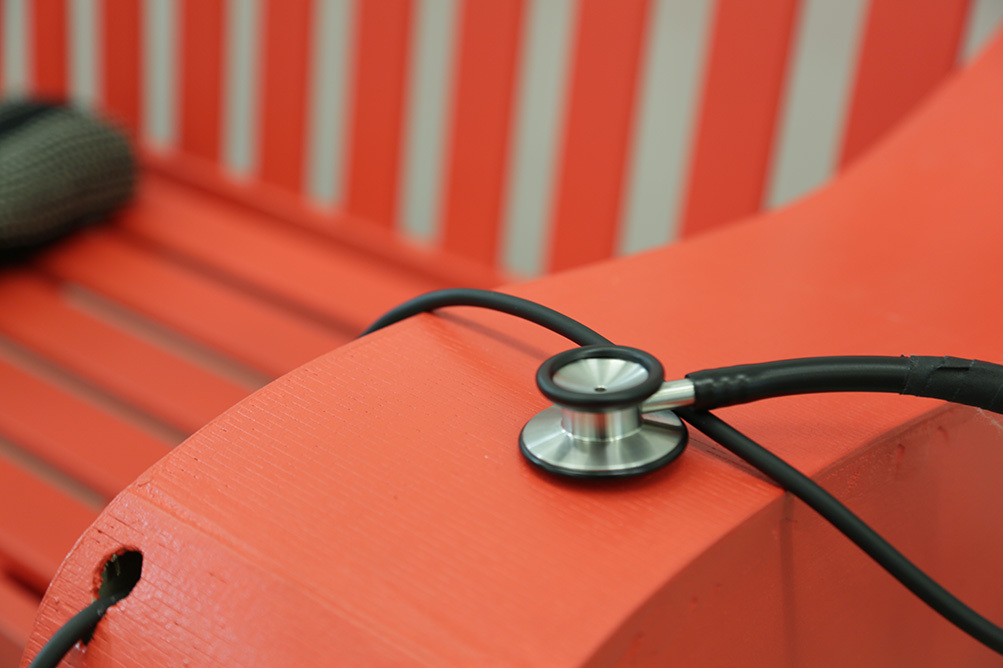
Stethoscopes provided rich, responsive sound. Although not the most novel-seeming sensor, they had numerous advantages over other options. Participants readily understood how they work and what kind of data they were giving up. While many other sensors provide heart rate as a rhythm or time series data, which is commonly sonified with a low pitch sine wave, stethoscopes directly provide the live unfiltered sounds of the body. Photo credit: Robert Kett.

I connected the stethoscope to a microphone to convert the sound waves to an electronic audio signal. This signal is amplified and sent to a transducer. In version 1 of the bench, the transducer is simply a speaker. In version 2 (work in progress), a surface transducer is affixed to the wooden siding of the bench, making the siding vibrate as the speaker.
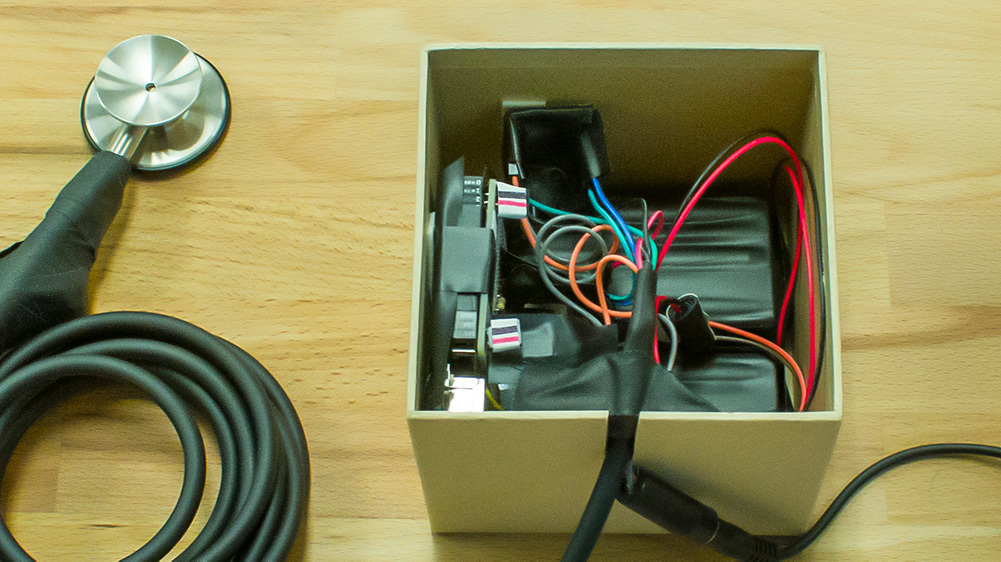
The electronics can be battery-powered and fit into a small box.
Funding
This project has been supported by the Extension of Self exhibition curated by Birney Roberts, Jacobs Innovation Center Catalyst Grant (listing), a Center for Long Term Cybersecurity Grant (listing), and a CITRIS/Banatao Institute Tech for Social Good Award (listing). Early project stages were supported by an Arts Research Center Fellowship.
Press Coverage
Artist talk for Extension of Self exhibit at Georgia Tech (watch).
NPR City Lights with Lois Reitzes interviewed curator Birney Roberts and myself about the Extension of Self art exhibit and the Heart Sounds Bench (listen).
Jacobs Innovation Center Interview and Demo (watch).
This project was also covered by Cal Magazine, "Heart to Heart", by Tessa Sternberg, in 2019 (print only).
Paper
Life-Affirming Biosensing in Public: Sounding Heartbeats on a Red Bench. 2019. Noura Howell, Greg Niemeyer, Kimiko Ryokai. Proceedings of the 2019 CHI Conference on Human Factors in Computing Systems. pdf
Funding
This project was supported by the following awards.
Center for Long-Term Cybersecurity, University of California, Berkeley. 2019.
2018 - present